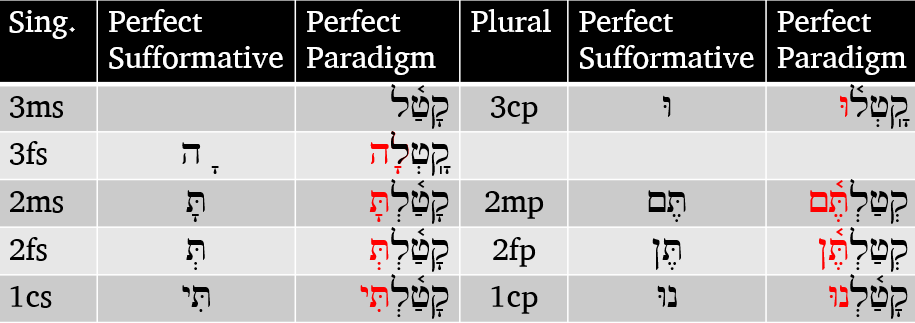13.8 Step 2: Put a Sheva before the Finite Sufformative
In 3FS and 3CP, this rule causes a Sheva to displace the expected Patach in \(V_2\) (step 4)
- This is a general rule that results in a Sheva under \(R_3\) or \(R_2\)
- This only applies to finite verbs (Perfect, Imperfect, Volitional)
- Take a look at the Qal Perfect Paradigm table again and note how there is a sheva next to the sufformative
- 3MS has no sufformative so it has no sheva
- 3CP and 3FS looks a little different because those sufformatives both start with a vowel
- The ל already has an associated vowel, Shureq (3CP)and Qamets+Hei (3FS)
- A consonant cannot have more than one vowel
- For these two PGN forms, since the Sheva can’t go under \(R_3\), it shifts to \(R_2\) (and displaces the Patach in \(V_2\))

The Sheva is rejected in the following circumstances:
- A Sheva does not replace an unchangeable long vowel
- A Sheva does not replace \(V_1\) of the Qal Perfect (and only the Qal Perfect)
- When \(R_3\) is א, the א quiesces (generally resulting in Compensatory Lengthening of \(V_2\))
The Sheva may either be silent or vocal, depending on the rules we learned in Lesson 3